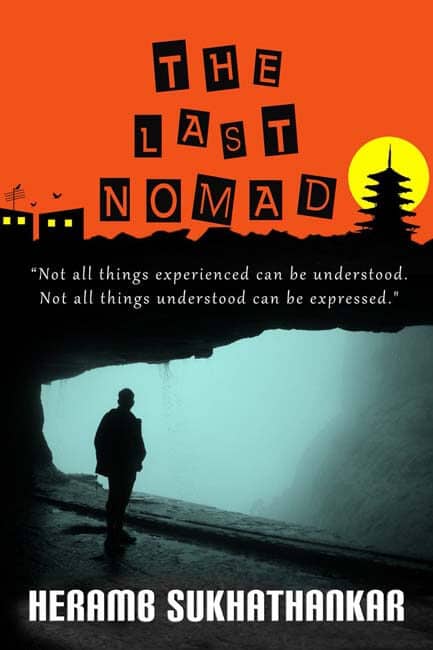WRITING STYLE: 3.5/5
CLIMAX: 2.5/5
ENTERTAINMENT QUOTIENT: 3/5
The Last Nomad narrates the vivid life events of a boy called Rahul in the slums of India who suffers from selective mutism and is denied decent medical treatment and medication due to the superstitious and ignorant nature of his parents.
The slums of India is portrayed in minute details. Heramb delves on the subjects of unemployment, poverty, alcoholism and corruption. This small book contains vibrant characters and deals with even more vibrant social as well as political issues in the Indian society. The varied aspects of politics, whether it be regional or religious politics, is also discussed. The writer tries to show as to how any social or cultural activity with a political motive can lead to a devastating end and how the poorer sections of the society are used as baits in these games. The superstitious psyche of the majority of the population in India is also reflected in the pages!
The spiritual and emotional journey takes an even deeper dive as Rahul transforms into Ryan and goes on a path of self-exploration and acceptance. Whirled up in a new location, he tries to adapt to a new culture but his past still haunts him. Unable to express his feelings or understand the new developments within and around him makes him suffer alone until he finds a confidante in Saki who showers his life in poetry that drenches him to his core and helps him find respite from the upheavals in his life.
The latter part of the book provides several valuable lessons on life through the words of Adinath, the person who enlightens Rahul on many mysteries of life and changes him to a great extent. But, does Rahul find his answers? Will he be cured of all the frailties in his life? Will he find inner peace in a chaotic world? It remains to be found out.
Starting with the cover of The Last Nomad – it is red in colour that tends to draw attention and also, shows a town above and a cave below that intricately symbolises the plot as well as the story within the story concept of the book. I really liked the quality of the pages in addition to the book cover.
Reading The Last Nomad reminded me of the quote by Mark Twain that “Truth is Stranger than Fiction”. There are certain revelations in the book that may leave the reader befuddled. Questions on reincarnation and self–exploration are deliberated. On one side there is the fraudulent Godman and on the other side, Adinath. Who is Adinath? Is he a fictitious character? Is he a fragment of Rahul’s imagination?’ This poetic narration is emotionally–charged, to say the least. Without detracting from the plot, the author showcased various elements of the Indian society and more specifically, on the concept of religion.
I love the format of a short length story as it is much preferred by people who like to read but can allow only a few hours from their busy lives to this. Also, the short length does not compromise with the storyline as it ends on a perfect note.
I must also add that the story starts with a very interesting beginning that will keep the readers glued to the pages from the start. My only regret was that the concept of “the last nomad” was not explicitly discussed in the book.
I went with the phrase in the book that “Not all things experienced can be understood. Not all things understood can be expressed.” But then, when I contacted the author of the book, he clarified by doubts regarding the concept of a nomad in the book. The first nomad is Laxmi, the biological mother of Rahul, the second nomad is Agnes, Ryan’s adoptive mother and Saki, his friend, is the third nomad who in their own ways pulled him out of the darkness and brought light in the life of Rahul/Ryan.
Overall, a sweet and powerful book that any lover of contemporary fiction would have a good time reading!
Can’t wait to read it? Buy your copy of The Last Nomad using the link below.
